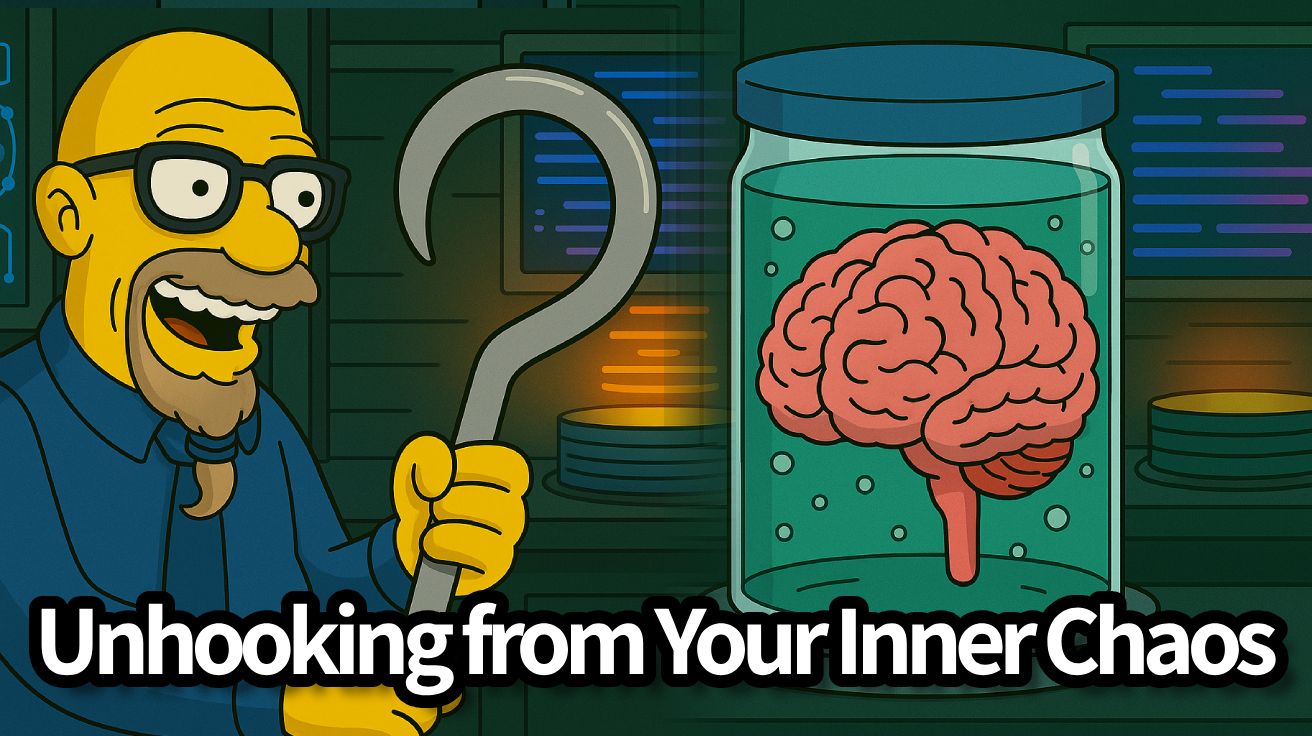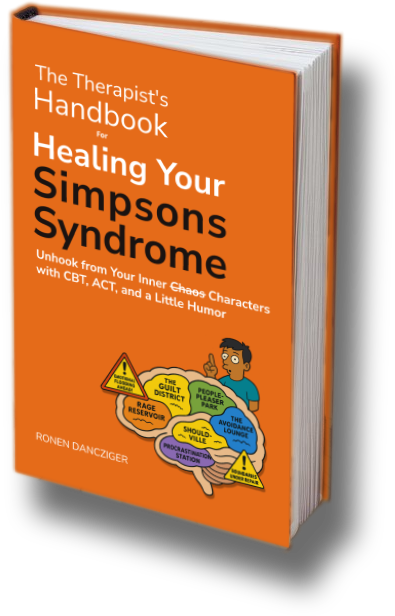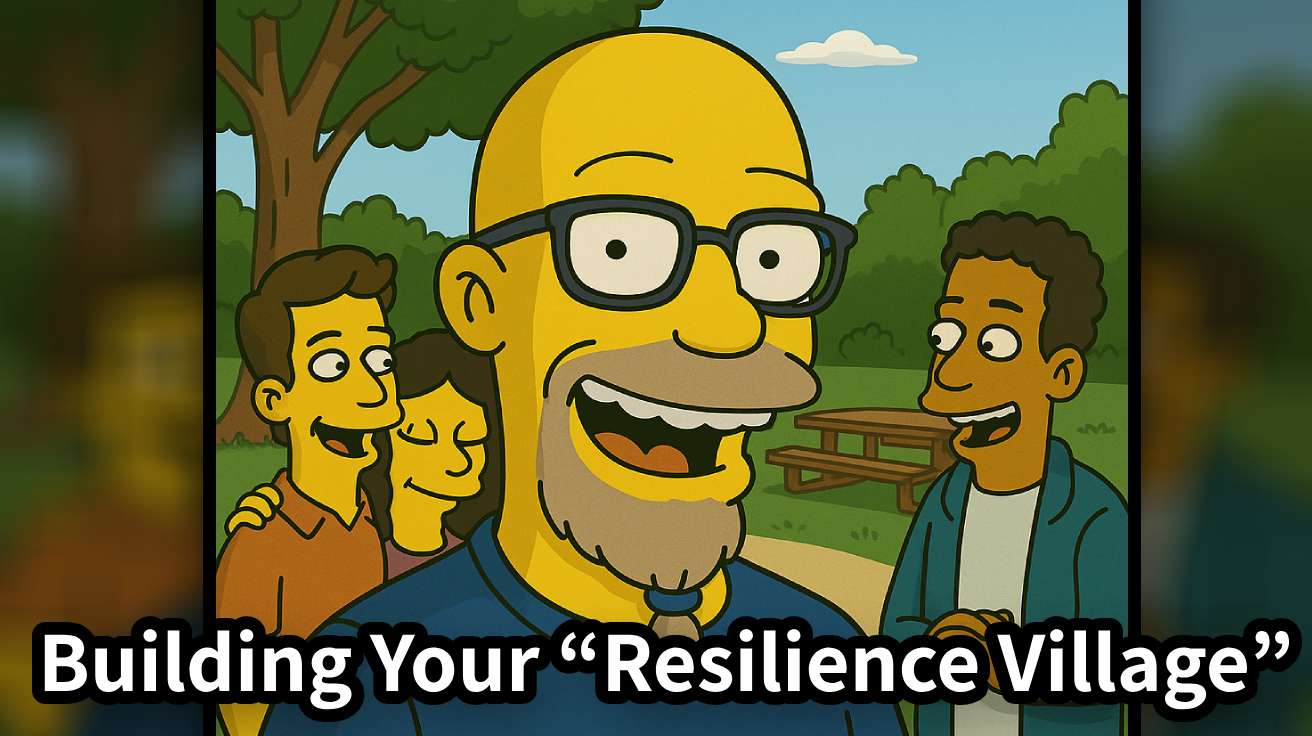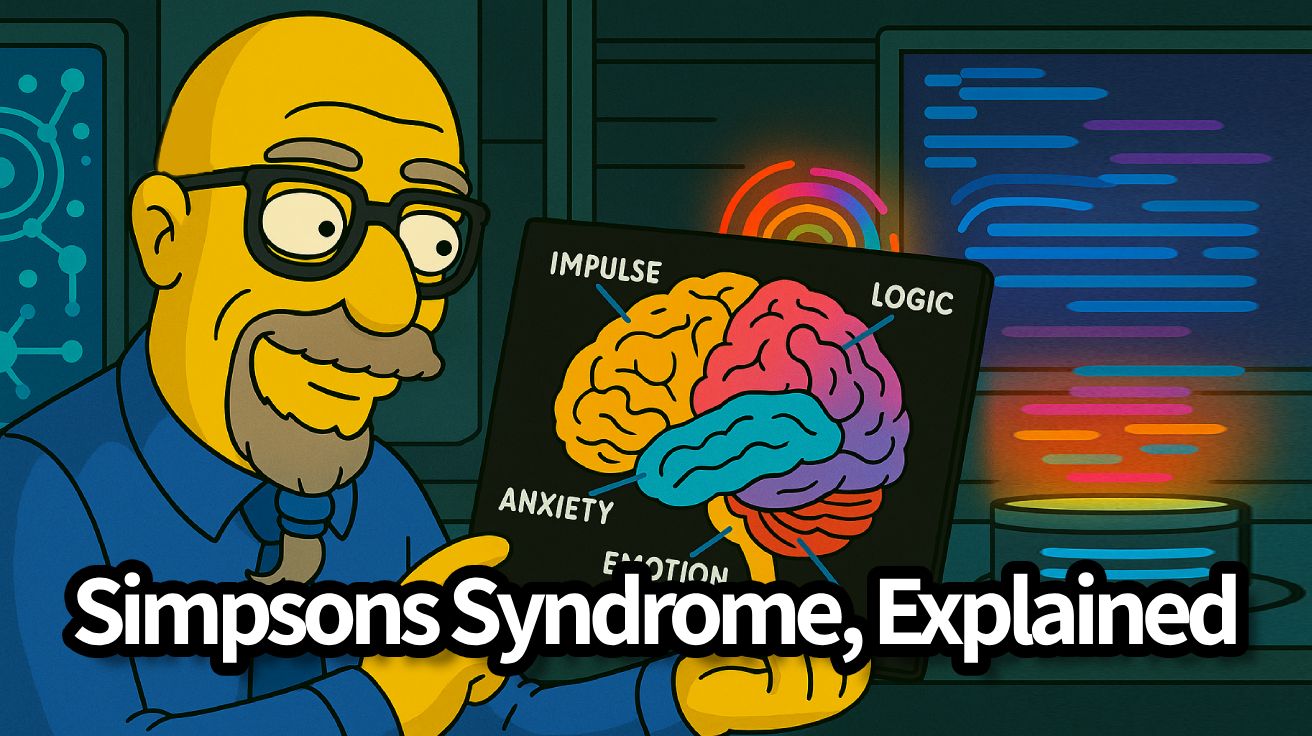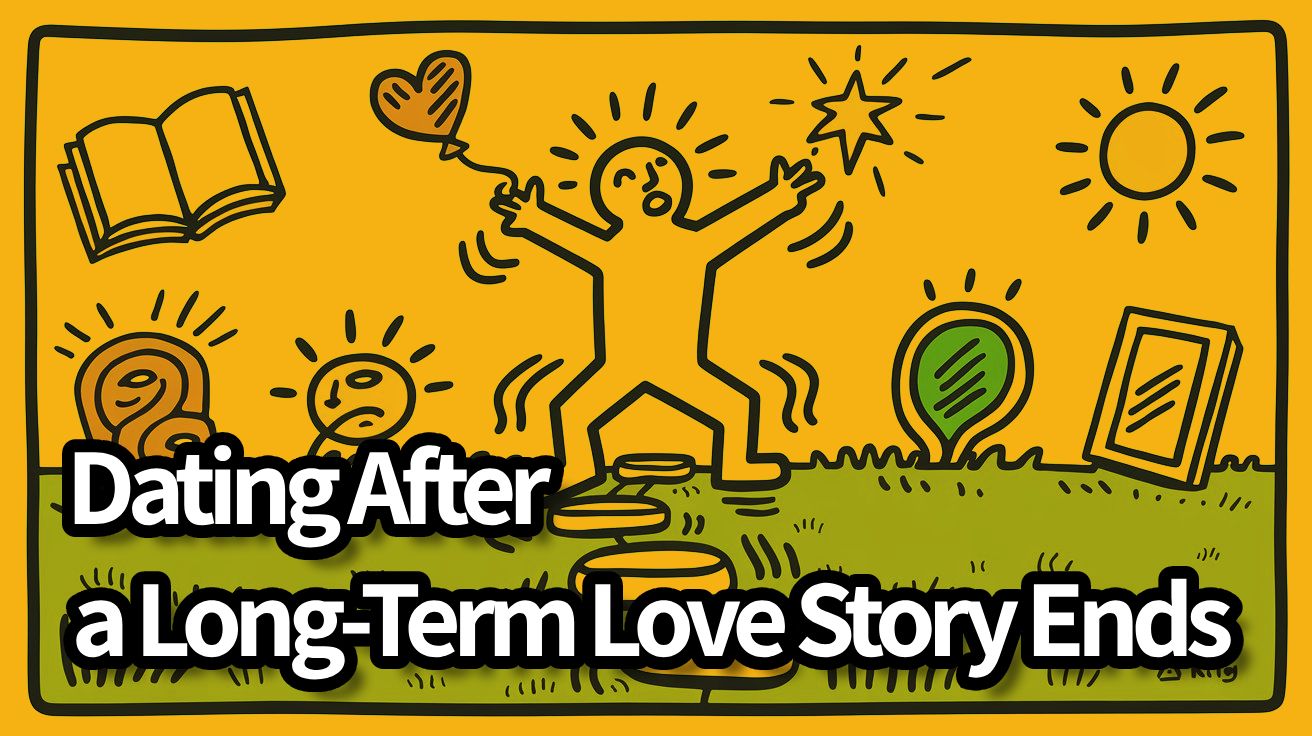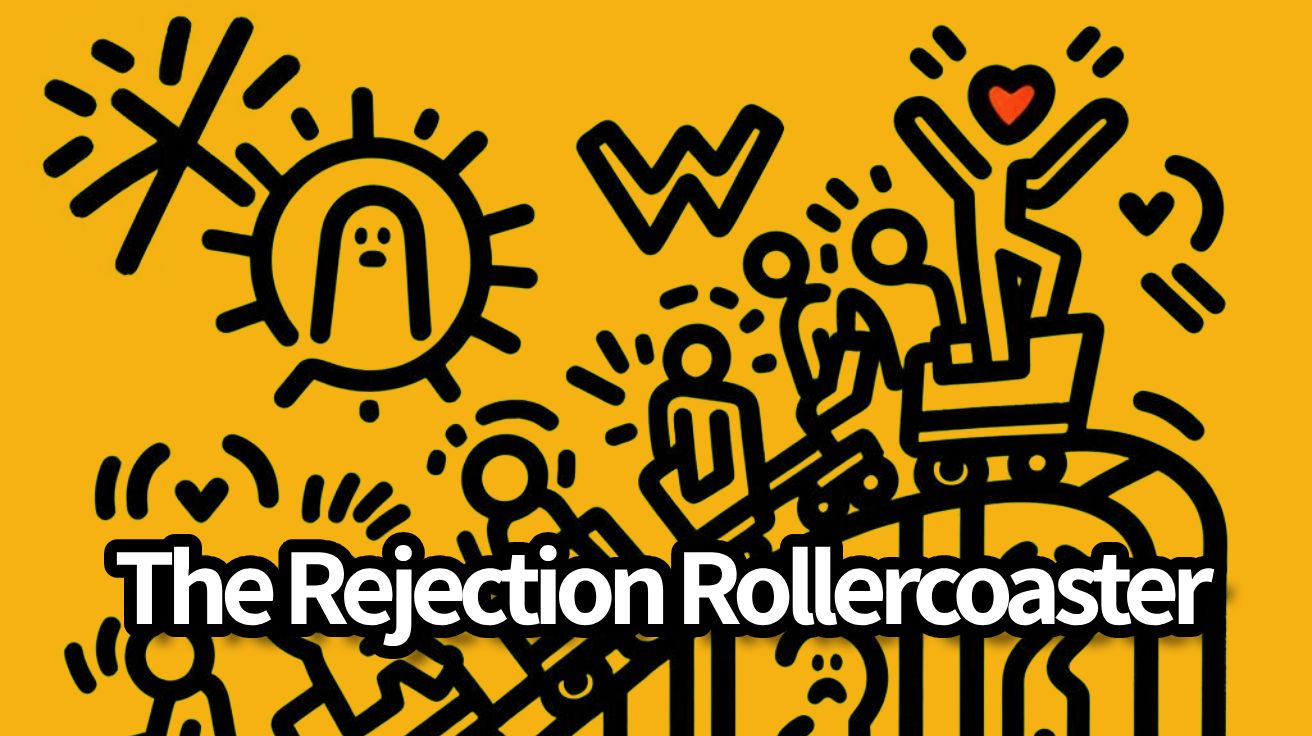Unhooking from Your Inner Chaos: Simple ACT Tools to Feel More Grounded
Ever feel like your mind is less a calm, Zen garden and more… well, your own personal Springfield?
A place where a chaotic cast of internal characters—your Inner Critic, the Overachiever, maybe even the Impulsive Gratifier—are constantly yelling their lines, making bad decisions, and generally hijacking the plot?
You’re not alone. In fact, welcome to the human condition.
That inner noise—the swirl of thoughts, feelings, and autopilot reactions—isn’t a sign that something’s wrong with you. It’s a sign that you’re wired for survival. But in burnout? That survival wiring goes into overdrive, and suddenly your mental Springfield turns into a full-blown sitcom disaster episode. With no commercial breaks.
The ACT Way Out (Spoiler: It’s Not About Silencing the Chaos)
Acceptance and Commitment Therapy (ACT) doesn’t try to evict your internal characters or demand they stop talking. Instead, ACT gives you a backstage pass. It helps you step out of the chaos, change your relationship with your thoughts and feelings, and take the director’s chair back—so you can start living more in line with what actually matters to you.
Two core tools from ACT can help you unhook from the noise and get grounded: Cognitive Defusion and Acceptance. Think of them as your inner script-editing tools—not to erase the drama, but to give you a chance to rewrite your response to it.
1. Cognitive Defusion: Your Thoughts Are Not the Boss of You
Let’s say your Inner Critic pipes up with, “You’re lazy.” Or your Overachiever panics, “You have to say yes or you’ll let everyone down!”
We often get so wrapped up in the content of our thoughts that we treat them like facts—or worse, commands. But thoughts are not truth. They’re mental events. Brain weather. Script drafts.
Cognitive Defusion helps you create space between you and those thoughts. It lets you see the thought instead of being the thought. Imagine the difference between being stuck inside a soap opera… or watching it from the couch with popcorn.
Tiny Defusion Techniques to Try:
-
Add a carrier phrase. When a sticky thought shows up, try saying, “I’m having the thought that…”
So, “I’m a failure” becomes “I’m having the thought that I’m a failure.” That little shift? It’s psychological aikido. It loosens the thought’s grip. -
Thank your mind. When a thought pipes up unhelpfully, say (out loud or in your head), “Thanks, Mind!” It sounds silly, but it’s disarming. It acknowledges the thought without giving it a crown.
-
Name the character. “Ah, there’s my Inner Guilt Tripper again.” Labeling the part helps you remember this is just one voice in a crowded cast—not your whole self.
These aren’t about deleting thoughts. They’re about turning the volume down just enough to make a conscious choice instead of a reflexive reaction.
2. Acceptance: Making Space Without the Struggle
The other key player here? Acceptance.
Now, before your Inner Skeptic chimes in—no, acceptance doesn’t mean giving up or rolling over for burnout. It means making space for difficult thoughts and feelings without fighting them.
Because when you resist what’s already happening—like anxiety, sadness, or that 4 PM wave of existential dread—you double your suffering. The emotion is one thing. The struggle against it is another.
Instead, you learn to say: “Oh hey, anxiety. I see you.” You don’t have to love it. You just stop feeding it shame and resistance for dessert.
Why This Works:
When you allow emotions to be present without pushing them away or over-identifying with them, they pass more easily. (Your brain stops ringing the alarm bells quite so hard.)
This is especially helpful in burnout, where emotions like guilt, helplessness, or frustration can feel overwhelming. Instead of trying to fix or numb them, ACT teaches you to hold them—and keep moving in the direction of what matters.
Mindfulness: Your Anchor in the Inner Storm
Defusion and acceptance are powered by mindfulness—that practice of noticing what’s happening in the moment without judgment.
Mindfulness is how you go from being in the storm to watching it from the lighthouse.
It’s noticing: “My heart is racing. I’m feeling tense. My Inner Critic is giving a TED Talk again.”
Noticing is powerful. It creates a pause. And in that pause, you get to choose how you respond.
Labeling your experience—like “This is stress” or “I’m feeling overwhelmed”—can actually turn the volume down. It’s like giving your brain a weather report: “Partly cloudy with a 70% chance of burnout-induced snarkiness.”
From Chaos to Choice: Why This Actually Matters
These ACT tools aren’t about feeling amazing all the time. They’re about helping you live better—even when things aren’t amazing.
They help you stop fighting your inner Springfield and start directing it toward something that matters.
Imagine showing up to your day not perfectly calm, but anchored. Not burnout-free, but burnout-aware and response-ready. You notice the thought. You unhook from it. You let the feeling be there. And you choose what to do next.
That’s where your power lives.
The Final Scene: You’re Not Broken—You’re in Rehearsal
You don’t need to fix your inner chaos. You need to change your relationship with it.
With defusion, acceptance, and mindfulness, you’re not trying to rewrite yourself into a bland sitcom character who never struggles. You’re becoming a director who knows how to work with a wild cast—and still put on a damn good show.
So next time your mind starts spiraling, try this: Pause. Breathe. Notice who’s talking. Step back. And choose your next line.
It’s your stage. Your script. Your story.
Let’s make this season one worth watching.

